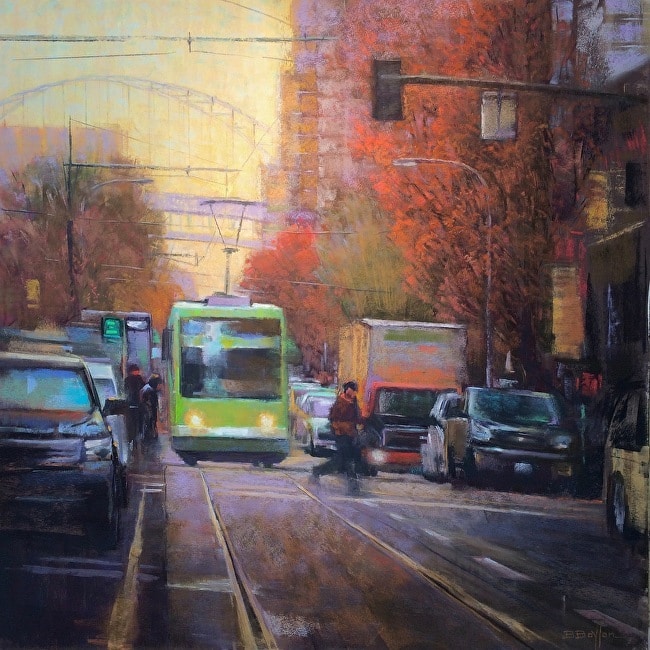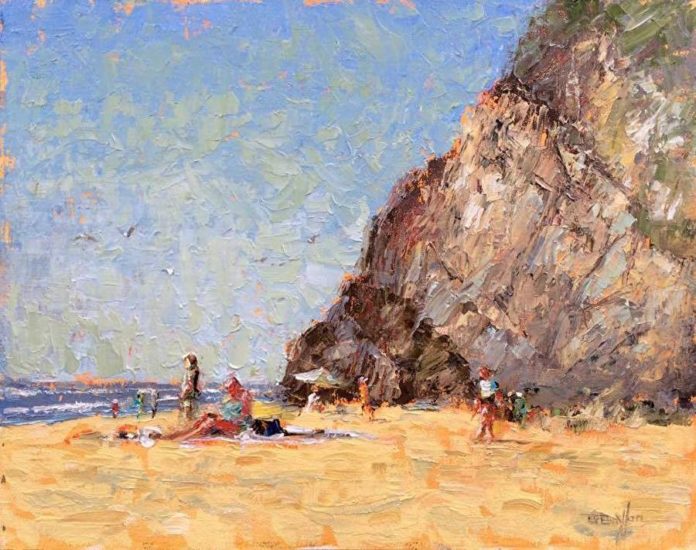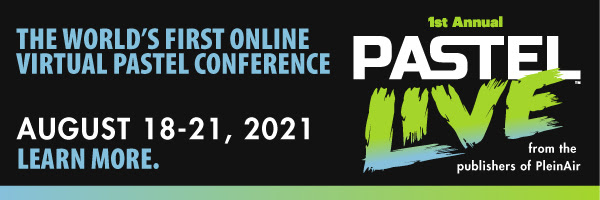No-fear plein air painting requires a little planning, a healthy dose of respect for nature and a keen sense of humor. With Brenda Boylan’s simple tips for painting en plein air, you’ll be able to hit the ground running and make the most of your experience.
1. Practice setting up your easel a few times before your first outing. Navigating an umbrella can be a humorous endeavor for others to observe, so practice where and how to hook it up to avoid frustration and wasted time.
2. Your first mark should be the horizon line. This grounds your painting and immediately navigates the space.
3. When dressing, think thin-to-thick. Wear layers of clothing to avoid colder-than-expected or steaming hot conditions.
4. Be courteous and respectful with nature and your fellow painters while out painting. In that way, painting outdoors is a little like camping. If you are in a very wild area, expect natural things to happen. Bug bites, wildlife, unexpected weather conditions, or a potential angry farmer, as well as the best painting subject matter, are all part of the plein air experience. Leave no trace behind.
5. Have a sense of humor at the easel. This keeps things simple and not overworked — not to mention, the “fun factor” is definitely increased.

Learn more about Brenda Boylan at www.brendaboylan.com.
Do you have your favorite hacks and tips for painting outdoors? Share them in the comments below!
Visit EricRhoads.com to find out all the amazing opportunities for artists through Streamline Publishing, including:
– Online art conferences such as Plein Air Live
– New video workshops for artists
– Incredible art retreats
– Educational and fun art conventions, and much more.
> Subscribe to Plein Air Today, a free newsletter for artists
> Subscribe to PleinAir Magazine so you never miss an issue







– Clean your palette the day before your excursion , take inventory of paints, brushes, OMS etc
– For a three hour painting session, devote the first 30 minutes to walking around and being certain you have a viable subject, strong shapes
– Use your camera to frame your intended subject then edit (contrast, crop, move,etc.)
– Use black and white lead pencils on toned paper to thumbnail sketch your subject from different viewpoints and formats
– When painting don’t be afraid to take a rag and wipe out less than strong shapes.
Thanks Dan! Nice addition to this great article!
May I ask what is everyone’s favorite Plein air easel/pallet and Tripod. I am in the market to buy for the first time and need guidance
Hi Janice! I think you’ll find this article helpful: https://www.outdoorpainter.com/best-plein-air-easels-for-artists/. It’s a roundup of our community members’ favorite easels and setups for plein air artists. 🙂 Enjoy!